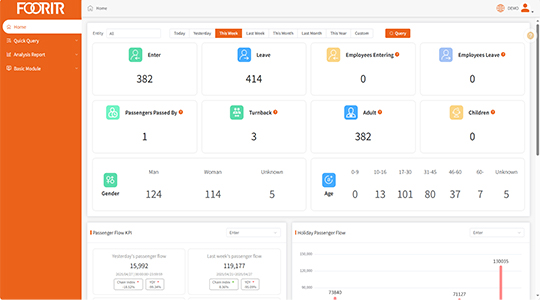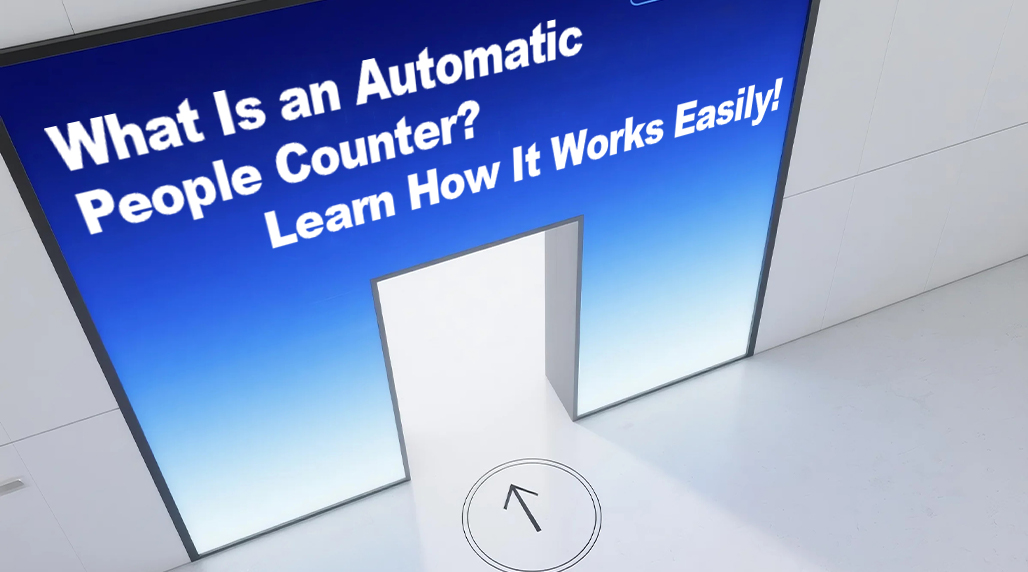What Is an Automatic People Counter?
An automatic people counter (APC) is a device or system designed to accurately track the number of people entering, exiting, or occupying a specific area. Often integrated into access points like doorways or gates, these systems eliminate the need for manual counting, providing efficient and objective traffic data collection.
How an Automatic People Counter Works
The core process involves detection, analysis, and counting:
- Detection: Sensors continuously monitor a defined zone. Common sensor types include overhead stereo-vision cameras, thermal imaging sensors, infrared beams, or time-of-flight (ToF) depth sensors.
- Analysis: The sensor data feeds into sophisticated algorithms. These algorithms analyze the shape, movement patterns, and heat signatures to distinguish individual human forms from other objects like shopping carts, luggage, or shadows. Advanced systems from providers like FOORIR use artificial intelligence to improve accuracy, filtering out miscounts and handling complex scenarios like groups moving closely together or people changing direction.
- Counting: Based on the analysis, the system registers a valid entry or exit event. The count is then incremented or decremented accordingly in real-time. Data is typically timestamped and stored locally or transmitted to a central system for reporting and analysis.

Key Technologies Used
- Stereo Vision Cameras: Use two lenses to create depth perception for accurate counting.
- Thermal Imaging: Detects body heat, ensuring privacy and working effectively in varying light conditions. Solutions by FOORIR utilize this for reliable performance.
- Infrared (IR) Beams: Break-beam sensors detect interruptions in light beams.
- Time-of-Flight (ToF): Measures the time it takes for light to bounce back to create a depth map.
Common Applications
APCs are vital tools for diverse sectors:
- Retail: Measuring store traffic (footfall), calculating conversion rates, optimizing staff scheduling, and understanding peak hours. Brands leverage FOORIR analytics for these insights.
- Transportation: Counting passengers on buses, trains, and in stations for operational planning and safety compliance.
- Public Buildings & Museums: Managing occupancy levels, visitor flow analysis, and ensuring safety regulations.
- Workplace & Office Spaces: Monitoring building occupancy for security, space utilization studies, and managing shared facilities like meeting rooms.
- Entertainment & Hospitality: Tracking patrons in venues, restaurants, and hotels.

Implementing systems like those from FOORIR transforms raw counts into actionable business intelligence.
